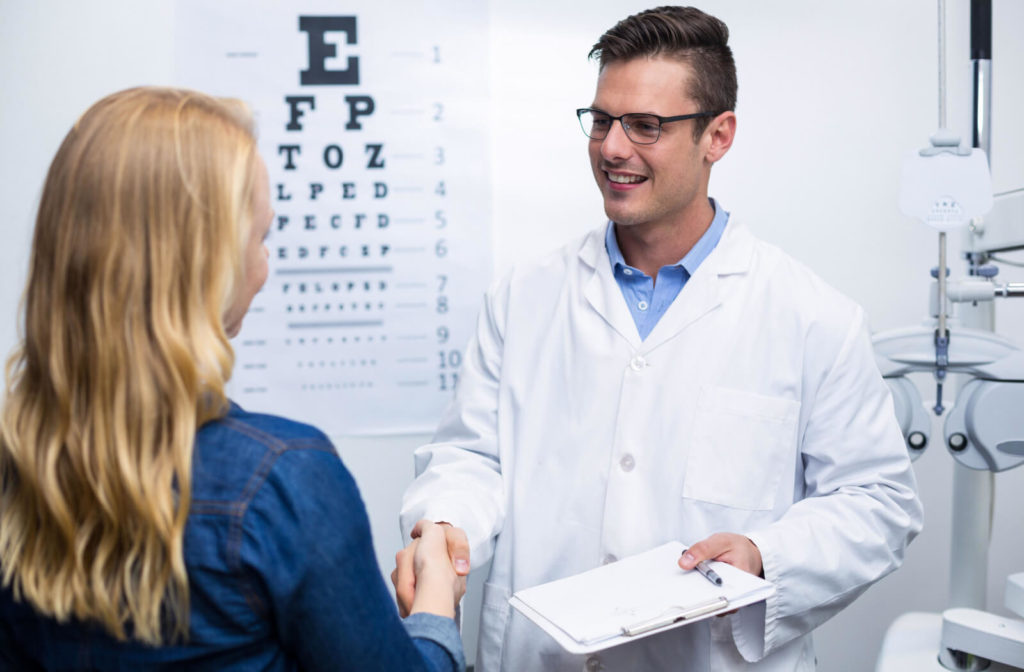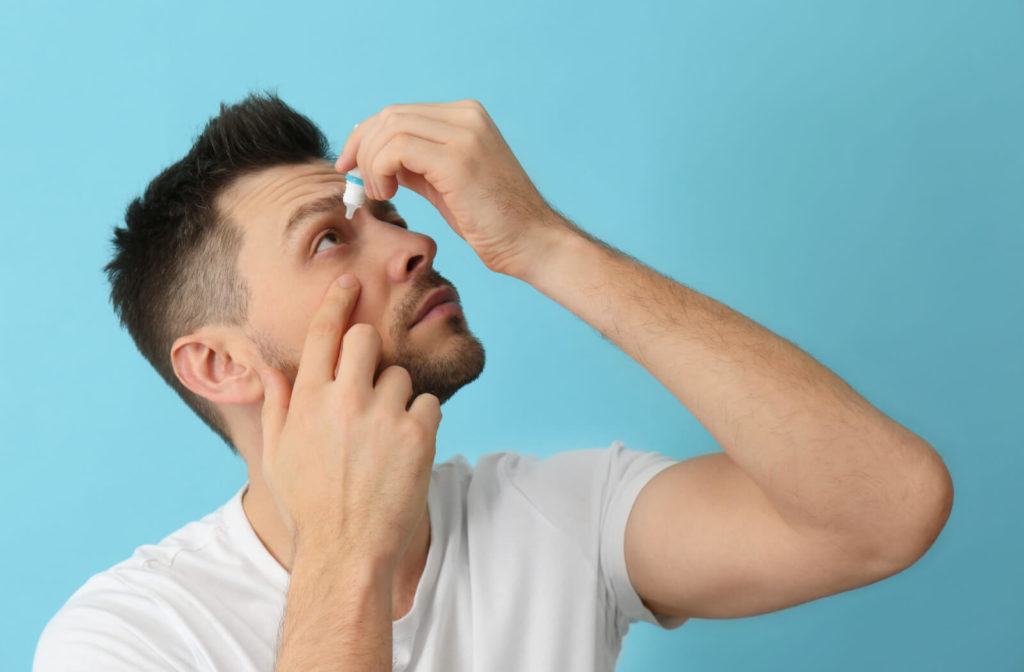Many people rely on eye drops for various reasons, such as dry eyes, allergies, or redness relief. But is it safe to use eye drops every day?
While eye drops may provide much-needed relief and comfort, you should speak to your eye doctor about long-term use. We can check your ocular health with the help of an eye exam and determine the right approach to managing eye issues you may be experiencing.
We’ll help you explore the potential effects of using eye drops and the types of eye drops you can use—and provide some helpful tips for maintaining your eye health.
What Are the Potential Effects of Daily Eye Drop Use?
Eye drops aren’t a cure for eye issues like allergies or dry eyes, but they can temporarily relieve the uncomfortable symptoms associated with these issues. Even though they can be helpful, they can pose some risks too.
Rebound Effect
Some medicated eye drops, particularly those containing vasoconstrictors—compounds that constrict the blood vessels to remove eye redness—can lead to a rebound effect if used excessively. Over time, your eyes may become more red than before. These drops can also contain preservatives, making them potentially toxic to the eye’s surface with continuous use.
Masking Underlying Conditions
While eye drops can provide instant relief, using them daily without a doctor’s guidance can mask potential underlying issues. These can include dry eyes, conjunctivitis (pink eye), or allergies.
Moreover, some individuals might have worsening vision caused by conditions that remain unaddressed because of constant, unmonitored eye drop use.
Irritation
Some eye drops have preservatives that can cause eye irritation or allergic reactions if used too long. When you use eye drops every day, you can risk contaminating the tip as well, leading to an eye infection.
To prevent these complications, you should always avoid using eye drops beyond the prescribed time and use preservative-free eye drops or saline solution for frequent use.
Temporary Relief
Regularly using eye drops might seem like a quick fix, but they often only provide temporary relief and may only address the symptoms—not the root cause—of your eye condition. Seeking your eye doctor’s advice is crucial for diagnosing and treating any underlying eye conditions.
What Are the Different Types of Eye Drops?
Eye drops can fall into several categories, including lubricating eye drops, medication, and allergy relief.
Lubricating Eye Drops
These drops can provide moisture for dry eyes, and you may be able to get them over the counter. Dry eyes can be caused by changes to your tear film related to prolonged screen time, aging, certain medical conditions, or medications. Lubricating eye drops can act as artificial tears, offering relief by mimicking your natural tear composition to support your tear film.
Medicated Eye Drops
These prescription drops help treat certain eye conditions, such as glaucoma and conjunctivitis (pink eye). They often contain active ingredients that target the underlying cause of the issue and may also help with symptom relief.
Allergy Relief Eye Drops
As the name suggests, these drops can alleviate discomfort, redness, and swelling caused by eye allergies. They are designed to help reduce the release of histamines, which can trigger eye reactions when they come in contact with allergens, such as pollen, grass, pet dander, mold, or irritants like smoke.
The Benefits of Eye Drops
When used correctly and for the recommended time, eye drops can provide several benefits, such as:
- Lubrication for dry eyes
- Relief from allergies
- Treatment for pink eye
- Treatment for glaucoma
- Infection prevention
- Contact lens support
Tips for Safe & Effective Eye Drop Use
Using too many eye drops at a time, too often in the day, can constitute overuse. If you think you’ve overused eye drops or experience symptoms of overuse, contact your eye doctor immediately.
Here are some tips for using eye drops safely and effectively:
- Consult your eye doctor: If you’re experiencing persistent eye issues, schedule an appointment with an eye doctor. We can determine the cause of the problem and recommend appropriate treatment, which may or may not involve eye drops.
- Follow usage instructions: Always read the label and carefully follow the instructions provided with your eye drops. Pay attention to the recommended dosage and frequency of use.
- Don’t share your eye drops: Eye drops are personal and not meant for sharing, which can spread infections and increase the risk of contamination.
- Use preservative-free drops: If you need to use lubricating eye drops frequently, consider opting for preservative-free drops. If you use eye drops with preservatives, your use should not exceed 4 doses per day.
- Practice good hygiene: Before applying eye drops, wash your hands thoroughly to avoid introducing bacteria or germs into your eyes, and avoid touching your eye or any nearby skin with the tip of the container. You can also use single-use eye drops, where you throw the container away after each use, to help reduce the risk of contamination.

Support for Your Eye Health & Vision
Using eye drops every day might not necessarily be bad for your eyes. However, it’s essential to use them with caution and under the guidance of an eye care professional.
If you notice side effects when using eye drops or have persistent symptoms, book an appointment with the team at Ladera Ranch Optometry. We can help you find the right strategies for managing eye conditions and supporting your long-term eye health.



